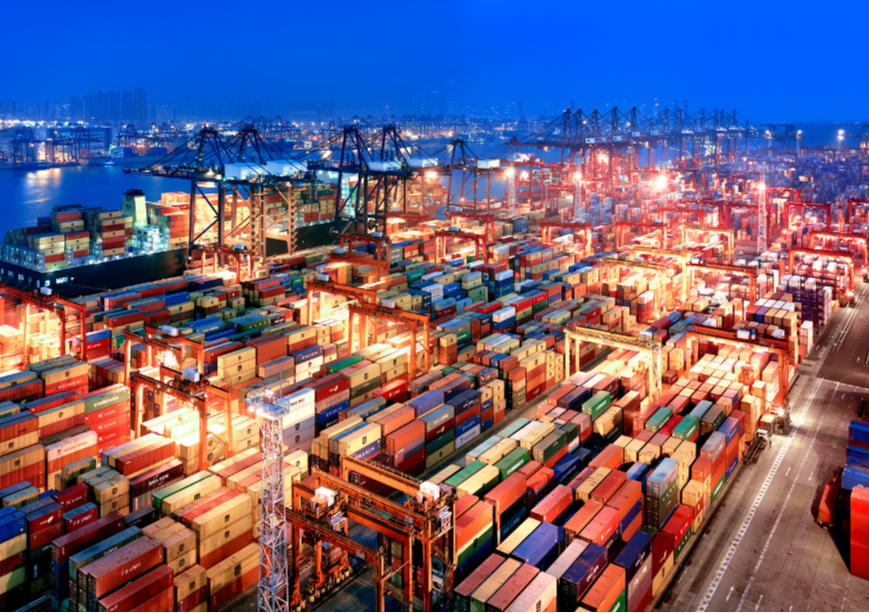-
CENTRES
Progammes & Centres
Location

This article is a part of the series - Raisina Files 2024
The global geopolitical and geo-economic landscape has been under severe stress in recent years. Individual economies, and their relationships with others including through trade, have faced challenges brought about by multiple factors such as rising production costs, a high degree of dependence on concentrated sourcing markets, their own policies, and other considerations beyond their control. The trade rivalry between the United States (US) and China has been the background of much of this uncertainty, punctuated by the prolonged fallout of the COVID-19 pandemic and security failures in Europe and West Asia, and compounded by the worsening climate crisis.
An important domain where geoeconomic rivalries are most visible is the politics of high-technology trade value chains. From raw materials to overall manufacturing, the Electronics System Design and Manufacturing (ESDM) sector has emerged as a strategic sector for development besides having the highest growth potential. Consequently, supply chain vulnerabilities in the ESDM sector can be seen as a threat to economic security.
India in the ESDM Value Chain
Achieving stability in the ESDM supply chain is a difficult task owing to strong regional concentration—i.e., the design ecosystem is concentrated in the west while production systems are dense in the east. This has resulted in niche expertise being created such that key technologies and production processes have become concentrated in specific geographies, not only for finished consumer goods but also for their sub-components. For instance, a semiconductor chip used in a Bluetooth or the Wi-Fi component of a smartphone could cross international borders nothing less than 70 times before reaching the consumer. The entire process takes up to 100 days, of which at least 12 are spent in transfer.[1]
According to India’s Ministry of Electronics and Information Technology’s (MeitY’s) Annual Report of 2022-23, the country’s share in the global production for the ESDM market is concentrated in consumer electronics, mobile phones, IT hardware, and electronic components.[2] These four categories of commodities account for about 70 percent of India’s domestic manufacturing. Over the years, the sector has gone through a transformation from being import-dependent to becoming a key focus area and element of India’s ‘Make in India’ vision and export-led growth strategy. The MeitY report also shows that mobile phone production, for one, has increased significantly, from 60 million units in 2014-15 to 290 million in 2020-21. Exports have grown 35 times between FY2017 and FY2021, according to UNCOMTRADE data.[3]Such growth in the manufacture and exports of smartphones has come with a concomitant increase in the import of components. The value of India’s imports of electronic components went up from US$54 billion in 2020-21 to US$67.9 billion in 2021-2022, or a year-on-year increase of 27 percent.[4] India thus continues to be dependent on other partners for technology and components, before the manufacture of the final products can take place locally. This situation exposes the country to the risk of supply chain disruptions from partners for a segment of the economy that has been a crucial driver of economic growth.
India can manage this risk in two ways: The first is through the pursuit of strategic partnerships with friendly countries by disseminating knowledge of India’s local supplier networks of Micro, Small and Medium Enterprises (MSMEs); the second is by leveraging its factor cost advantages. Competitive wages and skilled human resources will be key to attracting lead firms in global value chains (GVCs) to set shop in India. Mechanisms such as the Production Led Incentives (PLI) scheme, implemented along with policies to build high-quality industrial infrastructure, are also working in the country’s favour, besides its demographic dividend.
At present, India faces three major challenges to domestic components manufacturing: high logistics cost; lack of local supporting industries; and the lack of a skilled workforce. Relocating component manufacturing to India is not an easy task. This is the reason that regional connectivity, industrial infrastructure, and ease of doing business must be addressed in tandem. There is also a need to bridge gaps in access to basic production materials which may not always be locally available. Indeed, access to critical raw materials can be a disabler in securing the ESDM supply chain because the vulnerability comes from two sensitive fronts—a natural endowment disadvantage and a lack of reliable partners with the requisite reserves.
Given the role of the electronics sector in India’s economic as well as strategic security, it has taken it upon itself, along with like-minded partners, to make efforts to address the severe vulnerabilities in the supply of critical raw materials that impact the sector. Securing critical minerals is necessary to ensuring India’s advancement not only in the ESDM supply chain, but also in defence manufacturing and domains related to green technologies.
Securing the Future
The semiconductors or logic chips used in all consumer electronics and efficient batteries for Electronic Vehicles (EVs) are mainstays of the digital and green transitions, both of which are dependent on the supply of certain critical minerals. The competition to create more efficient semiconductors has become a matter of both economic and national security due to the growing use of these chips in the defence manufacturing sector as well. Critical minerals also have pride of place when calculating the costs of overdependence on specific markets.
The severity of the vulnerability is best explained by projecting the demand for semiconducting transistors. A basic underpinning law of ‘smart manufacturing’, known as Moore’s Law, predicts that the number of semiconductors used per silicon chip will double every two years.[5] The implication of the exponentially increasing demand for transistors is that the requirement for minerals or elements that go into the creation of integrated circuits alone will also be exponentially high. For example, the global demand for magnet rare-earths is expected to reach 466 kilotons by 2035, rising from 170 kilotons in 2022.[6]
In 2023, India identified 30 critical minerals[7,8] based on their level of economic relevance or supply risk, or a combination of the two. We can analyse India’s critical mineral dependence from an industry supply chain perspective or the value chain of critical minerals themselves (from extraction to processing for industrial use). Either way, there are a number of layers of complexity to be accounted for.
First is the natural endowment deterrent that is inherent in the supply of critical minerals. There are some minerals which inevitably would require strong regional relations to be built to secure their supply. For example, India has limited reserves of cobalt, while the Democratic Republic of the Congo has the largest reserves of this critical material. Second is the technology deterrent. Having the right and most efficient extraction and processing technology is necessary to ensure effective use of these minerals whose supply is limited and requires years of planning and mining before it can be viably replaced. Inherent in both is a third sensitivity—the extraction and refining process itself may be dependent on methods that are not green and negatively impact the environment. Countries wanting to secure these raw materials must seriously confront the task of limiting the environmental consequences of critical minerals extraction.
Securing the supply of critical minerals is an important step in India’s journey of becoming a stable electronics manufacturer. The supply of these minerals, when there is heavy external dependence, may often be unreliable and is a serious long-term vulnerability for the ESDM sector. The risk must be addressed through the pursuit of diverse and reliable partners for the supply of minerals not locally available, and to invest in Research and Development (R&D) to either find close substitutes, or to develop domestic refining technologies for minerals such as gallium and germanium which are by-products of locally available materials.
An Ecosystem Approach to Value Chain Resilience
On-shoring, near-shoring, and friend-shoring have become central to policy discussions around the quest for value chains security. India has been moving towards on-shoring and friend-shoring ESDM supply chains not only due to the sector’s criticality for economic growth, but also the potential it presents for employment. In the ESDM ecosystem, crucial challenges in four areas need to be addressed to make the sector more stable.
Policy Action Towards Resilience
This study undertaken by ORF and PwC points to several recommendations in the near and long term that address issues with the components segment, critical minerals, and therefore the full ecosystem of ESDM manufacturing in India.
In the near term, a first step would be to determine what would follow the PLI scheme. To ensure that lead firms shift manufacturing to India and eventually scale up, a mere five-year guarantee is not enough. Encouraging IP partnerships between owners and manufactures in India would be a critical element for long-term planning and building a sustainable manufacturing ecosystem. Addressing non-tariff barriers such as complex customs and licensing rules is also essential. Pursuing Free Trade Agreements (FTAs) with reliable partners for mutual benefit should be actively considered. For instance, there are a number of countries in Africa with whom India can partner to secure raw materials in exchange for technology transfer.
Even as India takes steps to strengthen partnerships with friendly states who are equally interested in securing critical minerals supply chains, in the short term, a part of imports from Chinese manufacturers would have to be allowed as part of a China+1 strategy. The aim should be to find solutions that make the same component sourced from a different partner more cost competitive so that dependence can reduce over time.
In the long term, skill development is an important policy area that demands attention for three reasons. First, the creation of new jobs for a growing population and closing the pay gap in manufacturing will also create demand-side stability for the economy, in general, and the ESDM sector in particular. Second, it is necessary to invest in jobs for the future. Even as redundancies in technology emerge, policy decisions should ensure that current and future workers in the sector are constantly trained and their skills upgraded. Third, skilled human resources are a competitive factor cost for India and will continue to be so for the foreseeable future. Investing in the country’s demographic dividend also has socioeconomic benefits as it expands the consumer base.
India would also need to invest in its partners. Geopolitical risks and external shocks will continue to play a role in trade policy regardless of internal efforts. India must carefully choose its partners, at least for the next ten years. These should be partners that are dependable and will grow together, thereby building better bonds in the region for a cohesive development journey.
Endnotes
[1] The White House, “Building Resilient Supply Chains, Revitalizing American Manufacturing, and Fostering Broad-Based Growth 100-Day Reviews Under Executive Order 14017,” 2021
[2] Annual Report 2022-23, Ministry of Electronics and Information Technology, Government of India, www.meity.gov.in
[3] UN Comtrade, “Trade Data,” 2024
[4] “Annual Report 2022-23”
[5] Chris Miller, Chip Wars: The Fight for the World’s Most Critical Technology (Simon andSchuster, 2022)
[6] “Five Steps for Solving the Rare-Earth Metals Shortage,” BCG, June 27, 2023
[7] Committee on Identification of Critical Minerals, Critical Minerals for India, Ministry of Mines, June 2023
[8] Committee on Identification of Critical Minerals, “Critical Minerals for India”
The views expressed above belong to the author(s). ORF research and analyses now available on Telegram! Click here to access our curated content — blogs, longforms and interviews.

Jhanvi Tripathi is an Associate Fellow with the Observer Research Foundation’s (ORF) Geoeconomics Programme. She served as the coordinator for the Think20 India secretariat during ...
Read More +